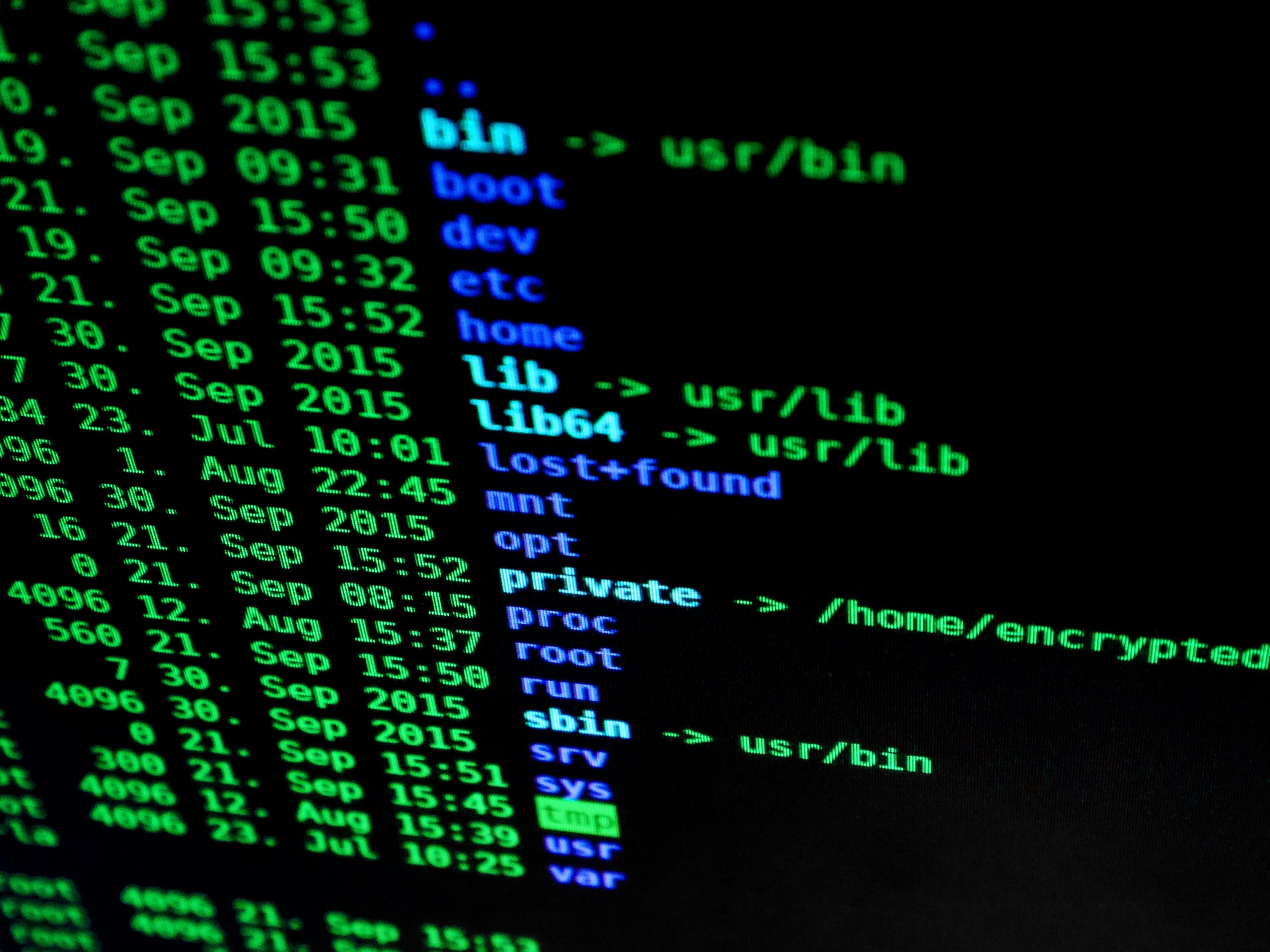
The Power of Code Review: Unveiling the Benefits, Pros, and Cons
The Essential Guide to Understanding Code Review
is a comprehensive resource that sheds light on the intricacies of this crucial aspect of software development.At its core, code review involves the systematic examination of code to identify flaws, provide feedback, and suggest improvements. It acts as a collaborative process by which peers or team members can assist each other to ensure code quality and enhance overall project performance.
One significant benefit of code reviews lies in leveraging the knowledge and experience of multiple individuals to catch issues that may have been overlooked during development or testing. This collaborative approach facilitates learning and encourages best practices, ultimately leading to more maintainable and efficient codebases.
Code reviews typically encompass various aspects such as adherence to coding standards, correctness, readability, efficiency, scalability, security measures, modularity, performance optimization, and potential bugs. These areas help ensure that the code adheres to industry best practices and meets project requirements.
To conduct thorough code reviews, developers usually follow a structured process. After selecting a set of changes or a particular feature for review, reviewers inspect the code meticulously line by line. They focus on understanding the concepts underlying the changes made and evaluating their impact on other parts of the codebase.
Reviewers often accompany their observations with explanations or suggestions aiming to improve the quality of the code. They may provide recommendations like using different algorithms or data structures, adhering to coding style guidelines consistently, improving naming conventions for variables or functions, optimizing performance by reducing computational complexity, or addressing security vulnerabilities through appropriate measures.
Communication plays a vital role throughout the code review process. Reviewers must effectively convey their recommendations while being respectful of the author's efforts. Likewise, authors should be open-minded when receiving feedback and seek clarification if needed. Engaging in discussions fosters knowledge-sharing and encourages collaboration within development teams.
Several tools exist to facilitate and streamline code reviews. GitHub and GitLab provide collaborative features like pull requests and inline commenting that simplify the process. Dedicated code review platforms such as Crucible, Phabricator, or Gerrit offer more advanced functionalities like code diff visualization and tighter integration with version control systems.
A successful code review culture fosters professional growth and skill improvement. Developers gain exposure to different approaches, technologies, and problem-solving techniques through the knowledge exchange that occurs during the reviews. Regularly engaging in code reviews also promotes the collective responsibility of the team towards code excellence, leading to higher-quality software products.
Embracing code reviews as an integral part of the development lifecycle contributes to better codebases, fewer issues down the line, improved collaboration among team members, increased project understanding, and ultimately results in highly robust and scalable software solutions.

Why Code Review is a Game Changer in Software Development
code review is an essential and transformative process in software development that has the potential to significantly impact the quality, maintainability, and efficiency of the codebase. It involves systematically examining a program's source code to identify bugs, logic flaws, vulnerabilities, and other issues before they reach production.One major advantage of code review is its ability to improve the overall quality of software. Through the careful examination of code by peers or senior developers, potential mistakes can be caught early on, reducing the number of bugs that could arise in later stages. This scrutiny also helps to enforce coding best practices and standards across the team, leading to more consistent and readable code.
Additionally, code review serves as a learning opportunity for both the reviewer and the author. Reviewers can gain valuable insights into alternative approaches or clever solutions employed by colleagues, enhancing their own programming skills. Authors, on the other hand, receive constructive feedback and suggestions for improvement, allowing them to grow and write better code over time.
The collaborative nature of code review fosters knowledge sharing and promotes effective communication within development teams. By engaging in thoughtful discussions about design choices, architectural decisions, or potential optimizations, team members can align their understanding and make collective decisions that contribute to a higher-quality end product.
In terms of catching bugs and preventing errors from causing major issues, code review acts as an additional layer of defense. It complements automated testing efforts by identifying problems that may not be covered by test cases. By addressing potential issues early on, developers have more opportunities to fix problems before they become critical or expensive to resolve.
Code review enhances overall productivity and reduces development time by avoiding future complications caused by flawed or ineffective code. Catching bugs during the review stage helps prevent issues from propagating into downstream phases like integration testing or production deployment. As a result, developers spend less time addressing bug fixes reported by users or dealing with technical debt down the line.
Moreover, code review plays a vital role in maintaining system security. By involving multiple eyes in scrutinizing the code, vulnerabilities and potential security breaches can be identified and rectified before deployment. This thorough examination reduces the likelihood of introducing security flaws, making software more robust and secure right from the start.
Overall, code review represents a fundamental and powerful practice for software development teams. Its impact goes far beyond mere bug-catching; it promotes knowledge sharing, supports team cohesion, increases the quality of the codebase, improves overall software security, and ultimately leads to better outcomes for both developers and end-users.

Easing Into Effective Code Reviews: Dos and Don'ts
code reviews are a crucial aspect of the software development process. They help teams ensure that code is not only bug-free but also adheres to best practices and maintainable standards. To ease into effective code reviews, it's important to follow dos and avoid don'ts.Firstly, Dos:
- Foster a positive environment: Create an atmosphere where code reviews are seen as constructive rather than a personal attack. Encourage team members to view code review comments as opportunities for growth and improvement.
- Define clear code review objectives: Clearly communicate what should be achieved through the code review process. Establish guidelines on what aspects or aspects the reviewer should focus on during the review, such as coding conventions, performance, security, or logic.
- Conduct regular and timely code reviews: Plan regular code review sessions to keep the feedback loop short, ideally before merging changes into the main branch. This helps catch issues early in the development process and avoids accumulating technical debt.
- Use tools to streamline the process: Leverage code review tools like GitLab's Merge Requests or GitHub's Pull Requests to facilitate the process collaboratively. Tools such as linters or static analysis tools can help automate certain types of checks while reviewing the code.
- Maintain a balance between positive and negative feedback: While addressing areas of improvement is essential, provide positive reinforcement for well-written code or clever solutions. Acknowledge strengths so developers do not feel disheartened or demotivated by focusing solely on mistakes.
Now let's consider Don'ts:
- Don't make late-stage reviews the norm: Aim to review code early in the development cycle rather than waiting until the last minute before a release. Late-stage reviews can lead to rushed fixes, stress, and increased chances of introducing regressions.
- Avoid excessive nitpicking: It may be tempting to focus on minor style preferences or formatting issues, but it is crucial to prioritize critical aspects like logic errors, security vulnerabilities, or adherence to project standards. Maintain focus on the bigger picture rather than getting hung up on trivialities.
- Don't overload code reviews: Attempting to review massive amounts of code in a single session can be overwhelming and counterproductive. It may result in important issues being overlooked or fatigue from the reviewer. Break down large changes into smaller, digestible chunks for effective reviews.
- Avoid ambiguous feedback: Clearly articulate comments during code reviews to ensure they are actionable and not open to interpretation. Ambiguous feedback may confuse the developer and require further clarification cycles, resulting in wasted time and effort.
- Don't skip follow-ups or mentoring opportunities: Code reviews offer valuable chances for cross-team learning and collaboration. Encourage reviewers to engage in discussions, offer guidance, and provide mentoring moments to ensure continuous improvement within the team.
By following these dos and avoiding the mentioned don'ts, you can create a constructive and efficient code review process that promotes growth, quality, and teamwork within your development team.

The Role of Automation in Enhancing Code Review Processes
Automation plays a significant role in enhancing code review processes. By automating certain aspects of the code review, developers can save time and improve the overall quality of their software.One aspect where automation aids code review is in the detection of bugs and potential issues. Static code analysis tools analyze source code without its execution, scanning for common coding mistakes, security vulnerabilities, or adherence to coding standards. These tools can quickly identify problems that human reviewers might miss, especially when working on large codebases. This automation enables developers to catch errors early in the process, leading to higher-quality code.
Continuous integration (CI) systems can automatically run a series of tests on every commit made by developers, ensuring that the codebase remains stable and functional. These automated tests can include unit tests, integration tests, or even performance tests. By employing CI systems, developers minimize regressions and foster a culture of frequent and reliable code reviews.
Furthermore, automated tools facilitate the enforcement of style guidelines and best practices. They can check if the code conforms to the defined coding conventions, such as indentation style, naming conventions, or spacing rules. Automating this process helps establish consistency across the entire project and reduces unnecessary discussions during the manual code review process.
Automated workflows also assist in reducing the tedious aspects of code review while maintaining efficiency. For example, tools can automatically generate and distribute code review notifications to relevant team members based on predefined criteria or changes in specific files or sections. By automating this process, code is reviewed promptly, and reviewers are less likely to overlook necessary reviews.
In addition to finding defects, automation aids in tracking code changes. Version control systems allow developers to track modifications made over time and easily revert changes if necessary. Additionally, documentation generation tools aid in maintaining up-to-date documentation by extracting relevant information from code comments or annotations automatically.
Automation also supports collaboration among team members during the code review process. By using version control systems together with automated code review tools, team members can provide feedback and discuss issues directly within the codebase. This streamlines communication and fosters open discussions without overwhelming email threads or scattered comments.
While automation offers numerous benefits to code review processes, it is important to remember that it is not a complete substitute for human judgement. Manual code review still plays an essential role in identifying complex design issues, evaluating algorithmic choices, and ensuring overall code elegance. Therefore, finding the right balance between automated checks and human reviews is crucial for achieving optimal results.

Overcoming Common Challenges in Code Review Practices
code review is an essential activity in software development that enables teams to maintain code quality, improve collaboration, and enhance overall efficiency. However, like any process, code reviews can encounter certain challenges that need to be overcome. By understanding these common obstacles, teams can better approach their code reviews and maximize the benefits derived from this practice.- Lack of Context: One prevalent challenge is a lack of context when reviewing code. Reviewers may not fully understand the requirements, desired outcomes, or project objectives. To overcome this, it's important for developers to provide comprehensive documentation alongside their code submissions. Additionally, having clear acceptance criteria and thorough communication channels between reviewers and developers is crucial for establishing an open dialogue focused on addressing potential context-related issues.
- Varying Experience Levels: Teams may consist of developers with varying experience levels, which can introduce challenges during code reviews. Novice or junior team members might feel intimidated or hesitant to provide feedback on the work of their more experienced peers. To address this, it's essential to create an inclusive environment where everyone feels encouraged to contribute constructively. Conducting regular knowledge-sharing sessions and encouraging mentors or leads to guide junior members can help bridge any experience gaps.
- Time Constraints: Time constraints can significantly impact the thoroughness of code reviews, particularly when urgent deadlines loom overhead. When time is limited, developers often rush through the process, leading to a less effective review. Mitigate this challenge by allocating dedicated timeframes for conducting code reviews in project schedules. Prioritize essential reviews over non-essential ones and use automation tools when feasible to streamline the process without compromising quality.
- Feedback Overload: Large-scale projects or oversights in splitting code into smaller reviewable chunks can result in feedback overload during code reviews. Addressing this challenge involves breaking down complex tasks into smaller units that are easier to assess comprehensively within a set timeframe. Encouraging code modularization and enforcing periodic incremental reviews instead of waiting for one big review at the end can mitigate the feedback overload burden.
- Defensive Attitudes: Sometimes developers may take critiques or suggestions personally, resulting in a defensive attitude toward feedback, ultimately hindering collaboration. Creating a culture of constructive criticism requires team members to foster mutual trust, respect, and a growth mindset. Encourage reviewers to focus on the code rather than the person behind it and carefully frame feedback using non-confrontational language, emphasizing improvement over criticism.
- Mentoring Challenges: While code reviews are effective learning opportunities for junior team members, senior developers or technical leads might not always have time to commit to extensive mentoring during code reviews. Overcoming this challenge involves distributing mentoring responsibilities across the team as a collective effort complemented by interactive group-learning sessions. Devise a structured mentorship program that allows junior developers to approach experienced team members whenever they need guidance.
- Balance Between Consistency and Flexibility: Striking the right balance between enforcing coding standards and allowing individual creativity can be challenging during code reviews. Establishing guidelines and best practices early on can promote consistency without stifling innovation and diversification in coding approaches. Periodic revision of these guidelines will help keep them up-to-date with evolving technologies while accommodating developers' growth and varying coding styles.
- Documentation Challenges: Poorly documented code often complicates the review process. Developers may miss key details or struggle to understand specific sections, leading to inefficient assessments. It is essential to emphasize the importance of thorough and well-structured documentation alongside code submissions. Encourage the consistent use of documentation templates or requirement checklists that cover relevant information such as inputs/outputs, expected behavior, known issues, etc.
By acknowledging and proactively addressing these common challenges in code review practices, development teams can enhance their overall effectiveness, code quality, and collaboration within projects. Continuous improvement through transparent communication channels, fostering a positive feedback culture, and structuring code review processes appropriately will prove invaluable for teams striving to optimize their software development workflows.

Navigating Through the Pros and Cons of Peer Code Reviews
Peer code review is a valuable practice in the software development process, but as with any approach, it has its pros and cons that developers should be aware of. Navigating through these advantages and disadvantages can help improve the efficiency and effectiveness of code reviews.Benefits:
Quality Assurance: Peer code reviews act as an additional layer of quality assurance, allowing other developers to identify potential bugs, logic errors, or security vulnerabilities before the code is merged into the main codebase. This process can contribute to creating more robust and reliable software.
Knowledge Sharing: Code reviews offer an opportunity for team members to share knowledge with one another. Reviewers can learn new techniques, best practices, or alternative solutions from the code being reviewed. People gain insights into different areas of the system and expand their skill set.
Collaboration: By involving multiple team members in reviewing code, a collaborative environment is fostered. When developers come together to share perspectives and ideas, innovative solutions often emerge. Code reviews can act as a platform for constructive discussions that lead to improving overall code quality.
Standardization: Having a peer review process encourages adherence to coding standards across the team. Following consistent conventions ensures readability and maintainability of the codebase. In turn, it becomes easier to onboard new team members and work on shared projects.
Drawbacks:
Time Consumption: Conducting code reviews requires time and effort from both developers involved in the review. This overhead can be seen as a drawback, especially when there are tight deadlines or urgent tasks at hand. Finding the right balance between timely feedback and meeting project deadlines is essential.
Subjectivity: Code reviews involve different individuals who may hold diverse viewpoints. Consequently, what one reviewer perceives as elegant may differ from another's perspective. Subjectivity can lead to conflicts in opinions among team members, occasionally leading to delays or less effective reviews.
Expertise Availability: In some cases, finding reviewers with specific domain knowledge or experience might be challenging, particularly in niche or specialized areas. Lacking appropriate expertise could limit the quality and comprehensiveness of the review.
Socio-emotional Challenges: The process of code review unveils individuals' work to their peers. Consequently, addressing potential issues may result in interpersonal challenges such as differing egos, resistance to feedback, or perceived criticism. Navigating these challenges and fostering an open and supportive atmosphere is crucial for effective code reviews.
In summary, peer code reviews bring numerous benefits like improved software quality, knowledge sharing, collaboration, and maintenance of coding standards. However, it's important to consider potential drawbacks related to time consumption, subjectivity in opinions, expertise availability, and socio-emotional factors. Balancing these factors while establishing a code review process tailored to the team's dynamics enhances the overall effectiveness of peer code reviews.

Exploring the Impact of Code Review on Team Dynamics
code review, a critical component of software development, involves examining someone else's code to find and fix errors, improve quality and efficiency, and promote collaboration within the team. While its main purpose is to ensure code correctness, code review also has a significant impact on team dynamics. Here are some key aspects to consider when exploring the impact of code review on team dynamics:- Communication and Collaboration: Code review provides an opportunity for team members to interact with each other and discuss coding practices, approaches, and potential improvements. It fosters better communication channels, enabling developers to clarify their intentions, share knowledge, propose alternative solutions, and provide constructive feedback. Through this process, team members learn from one another, derive different perspectives, and strengthen their collaborative abilities.
- Skill Development: By actively participating in the code review process, team members can enhance their technical skills. Reviewing others' code exposes developers to different coding patterns, best practices, and alternative implementations they may not have considered before. This exposure not only improves individual proficiency but also facilitates knowledge sharing among team members, establishing a continuous learning environment.
- Mentorship Opportunities: Code review offers opportunities for more experienced developers to mentor their juniors or less seasoned colleagues. Seasoned developers can share their expertise and guide less experienced peers to understand better coding standards and industry best practices. Such mentoring relationships built during code reviews inspire personal growth within the team while nurturing an environment of support and trust.
- Accountability and Code Ownership: Team dynamics are heavily influenced by transparency and individual accountability fostered through code review processes. Regularly reviewing code emphasizes communal responsibility for the overall quality of software products. Developers become collectively accountable for the codebase as they are encouraged to raise concerns regarding potential vulnerabilities or suboptimal implementations. This shared ownership improves trust among teammates and creates a sense of pride in delivering high-quality work.
- Conflict Resolution: During code review discussions, varying viewpoints and conflicts may arise. However, engaging in constructive debates on technical choices promotes healthy conflict resolution within the team. By addressing these conflicts directly and respecting diverse perspectives, team members can arrive at a consensus that benefits overall code quality. Encouraging effective conflict resolution enhances team dynamics and builds resilient teams capable of making better decisions collectively.
- Quality Improvement: Code review significantly contributes to improving the overall quality of software products. Collaborative feedback and open discussions enable developers to identify potential flaws and vulnerabilities early on, reducing the likelihood of issues propagating further into the development lifecycle. By focusing on identifying defects collectively, the team is constantly learning from past mistakes, ultimately producing more robust and reliable software.
In conclusion, code review plays a vital role not only in ensuring code correctness but also in shaping team dynamics positively. Effective code review processes strengthen communication channels, encourage collaboration and knowledge sharing, foster mentorship opportunities, emphasize accountability, enhance conflict resolution skills, and contribute to delivering high-quality work as a cohesive team.

Best Practices for Conducting Remote Code Reviews
Conducting remote code reviews efficiently and effectively is crucial in a distributed work environment or when collaborating with remote team members. Here are some best practices to ensure productive remote code reviews:- Establish clear communication channels: Use dedicated communication platforms such as Slack, Microsoft Teams, or project management tools to enable quick and seamless communication during code reviews. Clearly define which channels should be used for specific purposes to avoid confusion.
- Share code well in advance: Share the relevant code changes ahead of time so that reviewers have sufficient time to review thoroughly. This ensures they can provide thoughtful feedback instead of rushing through the review process.
- Leverage collaborative code review tools: Utilize code review tools like GitHub, GitLab, or Bitbucket that offer features specifically designed for remote code reviews. These tools allow for contextual discussions, inline commenting, and collaborative editing, streamlining the review process.
- Encourage constructive feedback: Remind reviewers to provide clear and constructive feedback while keeping the overall goal in mind — improving the code and driving higher quality. Encourage them to suggest alternative approaches, identify potential bugs or improvements, and provide explanatory comments alongside the feedback.
- Be respectful and empathetic: Code reviews should prioritize creating a positive environment where developers feel comfortable receiving feedback without taking it personally. Encourage reviewers to express their thoughts respectfully while understanding different perspectives and potential skill gaps among team members.
- Focus on automated checks initially: Before involving human reviewers, establish a set of automated checks, such as static analysis or linting tools, to enforce coding standards and catch common mistakes. This reduces common issues early on and ensures that human reviewers can focus on higher-level aspects.
- Define coding standards and guidelines: Establish well-documented coding standards that cover aspects like naming conventions, comment styles, formatting rules, use of libraries or frameworks, security practices, etc. These standards help maintain consistency across the codebase even while working remotely.
- Distribute the review responsibility: Encourage multiple team members to participate as reviewers, promoting collaboration and the sharing of knowledge within the team. This reduces the risk of blind spots and encourages diverse perspectives for code improvement.
- Schedule frequent but shorter review sessions: Instead of waiting for large chunks of code to be reviewed, break the reviews into smaller, focused sessions. Frequently reviewing a few files or features at a time helps maintain momentum, prevents code review backlogs, and ensures timely feedback.
- Monitor code review feedback loops: Keep track of review turnaround time to identify bottlenecks or delays that may hinder progress. Transparently communicate about any potential delays to manage expectations and avoid impacting project schedules adversely.
- Provide justifications for rejected feedback: In case any suggested changes or feedback is rejected during the review, ensure that constructive explanations or clarifications are provided. This promotes growth within the team while nurturing a culture of continuous learning.
- Follow up on addressed comments: Ensure that comments addressed by the author or stakeholders in subsequent commits or follow-up actions are clearly marked as resolved or closed. This allows reviewers to efficiently move forward without rehashing already resolved items.
- Document major insights or findings: Capture important takeaways from remote code reviews to help educate the rest of the team about specific learnings or discover patterns that can be beneficial in future reviews. This also signals continuous improvement and promotes knowledge sharing.
- Encourage periodic retrospectives: Conduct retrospective sessions for code reviews to see how the process can be further improved in terms of efficiency, clarity, and picking up on specific issues effectively—adapting code review practices based on these retrospectives can lead to better outcomes.
- Foster a blame-free culture: It is crucial to foster a supportive team culture that focuses on shared goals rather than assigning blame for bugs or issues discovered during code reviews. Stress teamwork, collective problem-solving, and encourage everyone to take ownership of code quality.
By incorporating these best practices for conducting remote code reviews, teams can ensure code quality, collaboration, and continuous improvement — irrespective of the geographical distribution.

Code Review Metrics: What Matters Most?
code review metrics are tools used to assess the effectiveness of the code review process. While there are several metrics available, it's crucial to focus on those that truly matter most. Here are some key considerations when it comes to code review metrics:Reviewers' Experience: Assessing the experience level of the reviewers can provide valuable insights into the overall quality of the code review process. Metrics such as their familiarity with the codebase, expertise in specific programming languages or frameworks, and experience with best practices can help distinguish the effectiveness of their feedback.
Review Coverage: This metric determines how much of the codebase is covered by code reviews. It is important to ascertain whether all critical modules and changes are being reviewed adequately. Assessing coverage not only helps ensure that flaws are identified but also identifies areas that may need additional resources or attention.
Review Turnaround Time: The duration it takes for a reviewer to respond with feedback plays a significant role in determining the efficiency of the process. Tracking how quickly reviews are completed helps identify bottlenecks and highlights the potential for delaying project timelines. Minimizing turnaround time ensures that developers can swiftly address reported issues and progress without unnecessary hindrances.
Defect Density: Defect density measures the number of defects found during a review in relation to the lines of code being reviewed. This metric provides an indication of code quality and identifies parts of the codebase that may require additional scrutiny. Identifying high-density areas enables effective allocation of resources and emphasizes improvement efforts in critical sections.
Feedback Quality: The quality of feedback received during code reviews impacts overall development quality. Evaluating feedback includes assessing its specificity, clarity, relevance, and ability to help developers improve their work. High-quality feedback plays a crucial role in optimizing the learning process, ensuring bugs are spotted earlier, and promoting best practices among team members.
Compliance with Standards: Code reviews serve as an opportunity to ensure compliance with coding standards, style guidelines, and industry best practices. Metrics tracking compliance help measure the team's ability to adhere to these standards consistently, providing insights into areas that require further guidance or training for the developers.
Learning Impact: Code reviews should prioritize knowledge-sharing and continuous improvement within the development team. Tracking the learning impact can evaluate whether code reviews effectively facilitate learning experiences for both authors and reviewers. This metric values knowledge transfer, encourages collaboration, and contributes to a culture of ongoing skill enhancement.
Communication Effectiveness: Gauge whether code review comments are concise, respectful, and enhance effective communication among team members. Assessing the effectiveness of communication assists in cultivating a positive review culture where developers can openly discuss code-related topics, voice concerns, and share knowledge freely.
Remember, choosing the right code review metrics depends on specific project requirements and objectives. By focusing on what truly matters – reviewer experience, coverage, turnaround time, defect density, feedback quality, compliance with standards, learning impact, and communication effectiveness – organizations can improve their code quality and foster continuous growth among development teams.

Security and Performance: The Too-Often Overlooked Benefits of Code Review
code review is a fundamental practice in software development that aims to ensure high code quality and minimize bugs. While the primary objectives of code review are often pursued to maintain code readability, adherence to best practices, and knowledge sharing among team members, two critical aspects frequently overlooked—though equally important—are security and performance.Security:
Code review acts as an additional layer of defense against security vulnerabilities. Thoroughly reviewing the codebase helps identify potential security loopholes or weaknesses that can be exploited by malicious entities. These vulnerabilities can range from simple coding errors like unvalidated inputs or unchecked permissions to more complex issues such as SQL injection attacks or insecure data storage.
A comprehensive code review allows developers to spot security flaws early in the development cycle, reducing the risk of exposing sensitive data or subjecting the system to cyberattacks later on. Analyses focused on data encryption, authentication processes, error handling, and input validation can unveil potential risks and compliance violations to industry standards or internal security guidelines.
Moreover, code reviews often foster discussions about secure coding practices within a team. Collaborative efforts to address security concerns promote a culture that prioritizes security awareness and bolster each developer's understanding of incorporating secure coding techniques into their work.
Performance:
Code efficiency greatly affects system performance. Identifying code segments that consume excessive resources or execute slowly is vital for creating fast, responsive applications. Though optimization techniques like caching or load balancing could compensate for subpar code, performing code review allows developers to identify suboptimal practices firsthand and rectify them at the root level.
During code review, potential bottlenecks such as unnecessary loops, redundant database queries, or inefficient algorithms can be identified. Refactoring the codebase based on these findings helps minimize resource usage and promotes overall application performance. Furthermore, improvements achieved through effective code review can enhance scalability – critical for applications under heavy loads or facing rapid growth.
Additionally, performance review during code analysis ensures that common coding mistakes leading to slower execution, like resource leaks or improper memory management, are promptly caught and rectified.
Concluding thoughts:
Code review should always extend beyond ensuring code readability and adherence to guidelines. Emphasizing security and performance aspects of code review can significantly augment the robustness and efficiency of software systems. Security vulnerabilities caught early in the development process, and enhanced performance through optimized code can contribute significantly to client satisfaction, help build user trust, and reduce maintenance costs down the line. In an era where cyber threats and demand for high-performance applications continue to rise, code review as a holistic process encompassing security and performance becomes more imperative than ever.

The Evolution of Code Review Tools: From Simple Checklists to AI-Assisted Platforms
code review is a fundamental process in software development that goes beyond simply identifying and fixing mistakes. Over time, code review tools have evolved significantly, from manual checklists to sophisticated AI-assisted platforms. This evolution has revolutionized the way developers collaborate, improve code quality, and optimize project efficiency.In the early days of code review, document-based checklists were common. These checklists often focused on basic concerns such as adherence to coding standards, proper indentation, and the absence of syntax errors. Though practical, they were limited in scope and lacked more comprehensive analysis capabilities.
As coding practices matured, so did the code review tools. The emergence of version control systems like CVS (Concurrent Version System) and SVN (Subversion) allowed for more organized collaboration among developers. These systems enabled reviewers to examine code commits, track changes, and leave feedback directly within the codebase itself.
With the popularity of distributed version control systems (DVCS) like Git and Mercurial came a new generation of code review tools specifically built around these technologies. These tools introduced features like inline commenting, line-by-line diffing, and pull request workflows. They enabled smoother peer collaboration and accelerated the feedback loop.
The next significant advancement in code review took place with the introduction of automated static analysis tools. These augmented traditional checklists by automatically scanning code for software defects, security vulnerabilities, and adherence to best practices. These tools transformed code review into a more comprehensive process that went beyond human observation alone.
Recently, machine learning and artificial intelligence have made their way onto the code review scene. Newer platforms employ AI algorithms to analyze source code more intelligently by taking into account unique context and patterns specific to each project or programming language. By utilizing vast datasets from open-source projects, these platforms can highlight potential issues, suggest better alternatives, and even predict future bugs.
These cutting-edge AI-assisted code review tools leverage advanced features like natural language processing for contextual understanding, deep learning to detect anomalies, and pattern recognition to identify code smells or anti-patterns. By providing developers with actionable insights, they significantly optimize code review efficiency and promote higher-quality software.
The evolution of code review tools has consistently aimed to alleviate the burden on developers while improving code quality. From simple checklists to AI-assisted platforms, these tools have revolutionized the efficiency, accuracy, and effectiveness of modern code review processes. As emerging technologies continue to shape our development workflows, it is safe to assume that code review will only become more intelligent and seamless in the future.

Fostering a Positive Culture Around Code Reviews
Fostering a positive culture around code reviews is crucial for creating a collaborative and supportive environment within a development team. When done right, code reviews can become a valuable opportunity for knowledge sharing, improving code quality, and encouraging professional growth. Here are some key points to consider when aiming to establish a positive culture of code reviews:Clear Objectives: Clearly communicate the objectives and expectations of code reviewing to all team members. Ensure everyone understands that the goal is not to nitpick or find faults but rather to improve the overall quality and maintainability of the codebase.
Constructive Feedback: Encourage reviewers to provide feedback and comments that are constructive, respectful, and focused on the code rather than the developer personally. It's essential to create an environment in which developers feel comfortable receiving feedback and actively seek opportunities for improvement.
Emphasize Learning: Foster a culture of continuous learning during code reviews. Encourage reviewers to explain their reasoning behind suggestions, share best practices, and suggest alternative approaches. Developers can benefit immensely from understanding different perspectives and techniques.
Timely Reviews: Establish a sense of urgency around code reviews. Encourage prompt responses and aim for quick turnarounds in order to prevent the accumulation of pending reviews. Lengthy delays can lead to frustration and hinder progress, impacting motivation and teamwork.
Recognition & Appreciation: Create an environment where both successful reviews and meaningful feedback are acknowledged. Celebrate individuals who contribute positively to the team through thorough reviews or providing insightful comments. Expressing gratitude for the effort put into each review goes a long way toward maintaining a positive culture.
Encourage Participation: Promote inclusivity by encouraging all team members to actively participate in code reviews. Ensure that developers of varying expertise levels have their voices heard, creating an atmosphere where collaboration thrives even among junior members.
Lead by Example: Team leads or senior developers should cascade best practices, giving insightful and exemplary feedback on a regular basis. Adhering to the principles of constructive critiqcism and demonstrating a positive attitude toward receiving feedback can inspire others to follow suit.
Continuous Improvement. Encourage teams to constantly evaluate and refine code review processes. This can involve soliciting feedback from team members, experimenting with different approaches, and incorporating new tools or frameworks that enhance the review process.
Mentoring Opportunities: Alongside improvement opportunities for individual developers, code reviews should also act as mentoring opportunities. Provide guidance and support to help junior team members excel while fostering an environment that facilitates growth for all involved.
By cultivating a positive culture around code reviews, development teams can foster an environment of open communication, collaboration, and personal growth.

How Continuous Integration and Continuous Deployment (CI/CD) Enhance Code Review Efforts
Continuous Integration and Continuous Deployment (CI/CD) significantly enhance code review efforts by instilling continuous feedback and speeding up the development process. Here's everything you need to know about how CI/CD improves code review:CI/CD ensures early detection of issues: By integrating the code changes into a shared repository multiple times throughout the day, CI systems immediately identify any failures or conflicts within the application. This early detection allows for quicker resolution of issues before they become significant problems.
Faster code reviews: Implementing CI/CD pipelines enables automated testing frameworks that work alongside code reviews. These automated systems, including unit tests and integration tests, automatically scan and validate the quality of code changes. The combination of automated testing and code reviews reduces human effort by addressing simple issues before manual reviews begin.
Improved code quality: With CI/CD, developers frequently integrate their changes into the mainline or shared repository. As a result, their peers have more opportunities to examine the code, identify potential weaknesses, inconsistencies, or scalability concerns, and suggest improvements through pull requests or comments. This iterative process continuously refines the overall code quality.
Immediate feedback for developers: By leveraging CI/CD techniques, feedback on changes is readily available to developers. CI checks verify if the code adheres to established guidelines, practices, and style guides in a short span. Developers can then take immediate corrective action based on these findings, ensuring high-quality standards are maintained.
Reduced deployment risks: Continuous Integration enforces regular merging and integration of code contributions. This ongoing synchronization process reveals integration issues early on. Addressing these issues ensures that when deployment occurs through Continuous Deployment or Continuous Delivery pipelines, most risks are mitigated as problems are corrected during development.
Iterative learning and knowledge transfer: When different developers review each other's code regularly through CI/CD pipelines, valuable insights are exchanged. It creates an environment for teaching best practices and transferring knowledge from experienced developers to newcomers to the project. Newcomers can quickly get acquainted with the established codebase through these iterative code review cycles.
Version control and traceability: CI/CD systems integrate with version control repositories such as Git, allowing for easy tracking of each code change's history. This traceability provides a comprehensive view of which adjustments were made during code reviews and who contributed to them. Developers can refer to previous code iterations with ease, facilitating troubleshooting and analysis when needed.
Shared understanding and collaboration: Continuous Integration and Continuous Deployment foster a collaborative environment. Code review tools and practices foster shared knowledge, enabling developers to consistently gauge and provide constructive feedback on their peers' changes. This interdisciplinary collaboration enables team members to develop a shared understanding of project requirements and architectural decisions.
Overall, CI/CD enhances code review efforts by fostering an incremental approach built on automated testing, early error detection, streamlined collaboration, knowledge sharing, improved code quality, and reduced risks during deployment.

Balancing Speed and Quality: Strategies for Efficient Code Reviews
code reviews play a crucial role in software development as they help ensure the overall quality of the codebase. However, achieving efficient code reviews can be a challenge, especially when balancing speed and quality. Here are some strategies that can aid in achieving efficient code reviews without compromising on the quality:- Establish Clear Guidelines: Provide a clear set of coding standards and guidelines for developers to follow. This allows reviewers to focus their attention on critical aspects rather than getting caught up in mere style issues.
- Divide and Conquer: Instead of reviewing large chunks of code at once, break it down into smaller, manageable units. This helps reviewers maintain focus and results in quicker reviews.
- Prioritize High-Impact Areas: Concentrate initially on areas of the code that are believed to have a higher probability of containing bugs or producing critical issues. By prioritizing these areas, reviewers can address potential problems early on while still providing valuable feedback.
- Use Automated Tools: Leveraging automated code analysis tools can significantly speed up the review process. These tools can identify common issues like formatting errors, complexity violations, security vulnerabilities, and more, enabling reviewers to solely focus on logic and design-related concerns.
- Define Review Scope: Clearly specify during code review what aspects should be evaluated, such as functionality, performance, security, or maintainability. Defining the review scope upfront helps eliminate unnecessary checks and promotes efficient use of time.
- Encourage Self-Review: Developers should first self-review their code before submitting it for a formal review. By doing this initial self-assessment and rectifying evident mistakes or inefficiencies, developers ensure that basic issues are caught early on, reducing feedback loops during the actual code review.
- Promote Collaboration: Code reviews should foster collaboration rather than turning into solitary endeavors. Encourage developers to discuss improvements with each other openly, exchange ideas, and provide suggestions collectively. This promotes shared responsibility and helps expedite resolutions.
- Clarify Feedback: When pointing out issues or suggesting changes, reviewers should provide clear, concise, and actionable feedback. Ambiguity or overly general comments can prolong the review process as more clarification or discussion might be required.
- Continuous Learning: Encourage both reviewers and developers to proactively learn and educate themselves regarding emerging best practices, technologies, and programming techniques. By staying up-to-date with advancements in the field, reviewers become more effective in evaluating code quality efficiently.
- Maintain a Balanced Perspective: While it is crucial to detect errors and suggest improvements, reviewers should also acknowledge the positive aspects and strengths of the code. Provide constructive feedback without discouraging developers or disrespecting their efforts.
Balancing speed and quality in code reviews is essential for maintaining an efficient development cycle. By implementing these strategies, teams can strike a balance that ensures comprehensive code reviews while optimizing productivity.

Making the Case for Mandatory Code Reviews in Agile Teams
code review is a vital practice in software development that involves evaluating and examining code to ensure it meets certain criteria, standards, and best practices. It plays a significant role in maintaining code quality, identifying bugs or vulnerabilities, spreading knowledge across the team, and improving collaboration. Although code reviews should ideally be an essential component of an Agile approach, some teams might question its need or usefulness. This blog aims to outline various arguments supporting the case for mandatory code reviews in Agile teams.- Improving Code Quality: Code review acts as an additional safeguard ensuring that the code meets the desired quality standards before merging it into the main codebase. By reviewing code comprehensively, potential bugs can be detected early on and rectified promptly. Thorough code reviews help maintain a healthy and maintainable codebase.
- Knowledge Sharing: Encouraging mandatory code reviews creates opportunities for knowledge sharing within a team. Developers get exposed to different programming styles, techniques, and best practices from their peers during the code review process. These insights lead to enhanced personal growth, shared understanding of anticipated issues, and ultimately improved coding practices among team members.
- Enhanced Collaboration: Mandatory code reviews enable collaboration among team members beyond mere development activities. Everyone involved has a chance to understand the implemented changes, provide feedback, ask questions, and propose improvements. As team members learn from one another's perspectives and experiences, they foster mutual respect and trust while collectively growing as developers.
- Early Bug Detection: Possibly one of the most impactful outcomes of code reviews is the opportunity for early bug detection. Mistakes made during development can be quickly identified through thorough review processes. This helps mitigate potential risks such as introducing security vulnerabilities or non-compliance with project requirements earlier in the development cycle when they are less complicated and expensive to fix.
- Uniform Codebase Standards: Code reviews help enforce uniform coding standards throughout the team and the codebase. By ensuring consistent formatting, naming conventions, documentation, and best practices in code, developers can produce high-quality code that is easier to read, understand, and maintain. This consistency helps prevent issues caused by different developers having divergent coding styles.
- Continuous Improvement: Mandatory code reviews provide a structured process for continuous improvement of the development team. The feedback and suggestions gained through reviews create opportunities to address habits that hinder productivity or cause technical debt. Developers can learn from their mistakes, share insights with colleagues, and collectively strive for continuous growth in their technical skills.
- Risk Mitigation: Introducing mandatory code reviews mitigates the potential risks arising from pushing untested or substandard code into production environments. By involving multiple perspectives in the review process, errors or gaps are caught early and rectified before they impact end-users or other development cycles tied to the feature under review.
Taken together, these reasons emphasize the value of mandatory code reviews within Agile teams. While some might doubt their need due to time constraints or presumed redundancy, making code reviews an obligatory practice brings numerous benefits revolving around maintaining high-quality code, fostering collaboration, reducing risks, spreading knowledge within the team, and promoting continuous improvement. By creating a culture where code review is not optional but rather an essential part of the development process, organizations ensure that their software products achieve higher standards of quality and functionality.
